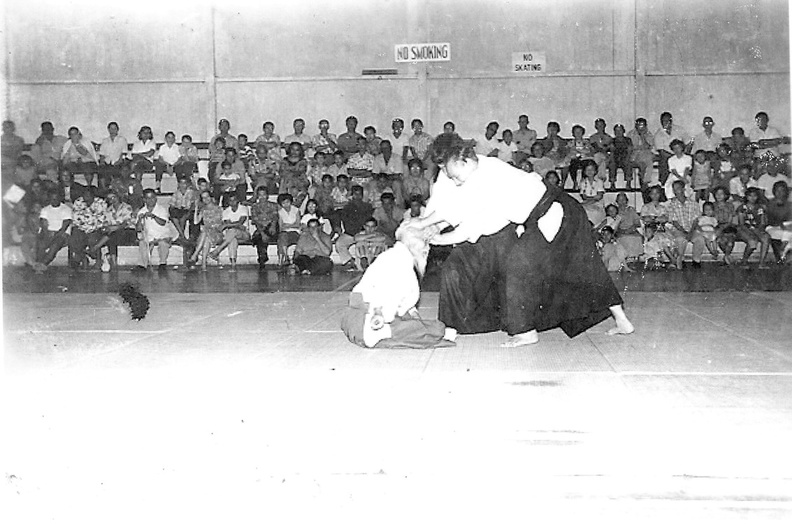The push test is a very practical way of testing the quality of one’s solo training for internal power. As explained in Weakest Direction Theory is BS, the body, when properly trained, acts as an omni-directional structure. This allows the practitioner of internal power to neutralize any incoming force by diffusing it throughout the structure rather than having to surrender to it or resist against it. Either you can do it or you can’t. There’s no way to fake it.
The push test is a test of the quality of relaxation and symmetry practiced in solo standing practice. Initially it’s a static test for neutral balance; no force expression. It’s a small portion of the final goal of internal power training, which is to be able to move freely in a dynamic symmetrical balance while expressing force in three dimensions.
The process is simple. The person being tested maintains a relaxed body, fueled by intent, open in 6 directions (up/down, left/right, front/back). The pusher applies force in multiple directions from multiple angles to make sure the pushee is able to express neutral balance in all directions. The pushes start soft then gradually build in strength depending upon the ability of the person being pushed. As they say in the kata descriptions within the Bujinkan densho, There is a Kuden.
The following 2 videos are compilations of various push tests from the past couple training sessions demonstrated by my training partner, Jaime Morrell and myself. These are meant to give you a glimpse into one aspect of how we train. They are certainly not the entirety of the practice, but a foundational part of it. If there is interest, we intend to create more videos expanding and explaining how we train and why we do what we do.
I would encourage you to share your own training drills and practices with us in the comments section below.






7 Comments
adam
November 4, 2014Please explain
Jon
November 4, 2014Hi Adam,
Which part? 🙂
Jon
ady
November 8, 2014hi jon,
interesting exercise.
The person being tested maintains a relaxed body, fueled by intent, open in 6 directions (up/down, left/right, front/back).
would you explain the phrase “fueled by intent” with an example? thanx
with regards
ady
Adam
November 9, 2014Hi Jon
Please give me your email address so we can discuss further.
Can you explain 6 directions intention please?
Thanks
Adam
Jon
November 9, 2014Adam,
Contact me at Jon@warriorfitness.org
Jon
Jarell
November 20, 2014Jon, how do you further develop such omni-directional structure and internal power? Because I’m certain that not all martial arts account for this training. Is the push test a method of training itself, or is it only used as a measure of your development in the training?
Jon
November 20, 2014Hey Jarell,
The push test is both a method of training, and a test of whether your solo training is working. When being pushed, the person must (counter-intuitively for us lifters) relax under load. The goal is to allow the connective tissue to absorb and transfer the load rather than the muscles.
Jon
Leave A Response